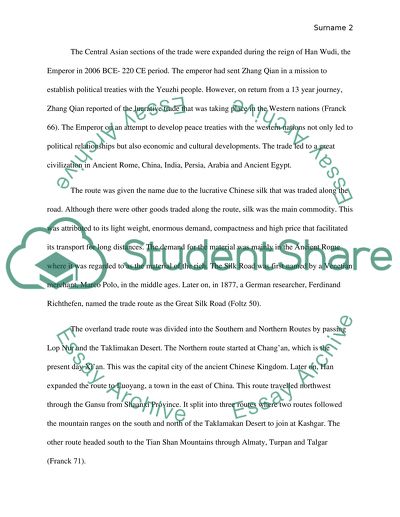Cite this document
(“The Silk Road Project Essay Example | Topics and Well Written Essays - 2000 words”, n.d.)
Retrieved from https://studentshare.org/history/1450070-the-silk-road-project
Retrieved from https://studentshare.org/history/1450070-the-silk-road-project
(The Silk Road Project Essay Example | Topics and Well Written Essays - 2000 Words)
https://studentshare.org/history/1450070-the-silk-road-project.
https://studentshare.org/history/1450070-the-silk-road-project.
“The Silk Road Project Essay Example | Topics and Well Written Essays - 2000 Words”, n.d. https://studentshare.org/history/1450070-the-silk-road-project.


